This was the message repeated many times during the day on our recent visit to Egypt. Visit Egypt, tell your friends to come and visit, it is safe here. From the guides we used, to the folks selling the entry tickets to the mosques, temples and pyramids, to the wait staff at the restaurants, to the cab drivers, everyone we bumped into said, please tell your family and friends it is safe here in Egypt please visit! Tourism was one of the most important industries in Egypt’s economy, it employed 12% of the workforce. At its peak in 2010 it providing $12.5 billion in revenues. Since the Revolution (more on that below) in January 2011 the industry has been devastated. Because of the general unrest in the country tourism has continued to decline and 2014 will be its worst year on record.
A brief history – Many people we met while in Egypt talked about “The Revolution of 2011”. I was at first taken back by this. One thinks of a revolution as being violent, destructive and bloody but in this case it was not so much. Hosni Mubarak came to power in 1981 after the assassination of Anwar Sadat. Many changes accrued in Egypt over the next 30 years. There was a huge population boom with changing demographics, many unemployed streamed into Cairo, terrorist attacks became more numerous, eventually targeting foreign tourist and government officials. Mubarak started to tighten his powers which lead to widespread protests against his government. January 25 2011 was the start of the revolution, a public uprising, massive demonstrations. On the 11th February 2011 he resigned and the Egyptian military assumed power. After several years of unrest, several elected leaders and the Muslim Brotherhood trying to take control, there was more massive protests that became more violent throughout Egypt, it ended with the military taking control of the country again. In May of 2014 another election was held that elected el-Sisi the current President of Egypt. He so far seems to be putting Egypt back on the right track? Only time will tell.
The folks that we had the opportunity to talked with told many stories about their life before and after “The Revolution”. Before 2011 most people were doing well, could make ends meet and had a relatively good life. After the Revolution all of that changed. Many households were devastated, jobs disappeared, shortages became common, and the infrastructure started to fall apart around them. Many now have multiple jobs trying to make ends meet.
Besides all of this Egypt today is still considered to be a regional and middle power with significant cultural, political and military influence in North Africa, the Middle East and within the Muslim world. Its economy is one of the largest and most diversified in the Middle East. But based on western standards it is still a relatively poor country with much to be done to restore itself to its former power.
Egypt has one of the oldest histories dating back to over 10,000 years BC. It is one of the world’s first nation states. It is considered the cradle of civilization. Ancient Egypt experienced some of the earliest developments in writing, agriculture, urbanization, organized religion and establishing a central government during this time. They have these iconic monuments such as the Giza Pyramids, the Great Sphinx, and the ruins of Memphis, Thebes, Karnack Temples and the Valley of the Kings to name a few. This rich cultural heritage stills plays an integral part in its national identity and worldwide interest.
The Nile – The Greek historian Herodotus wrote that “Egypt was a gift of the Nile”. The Nile is regarded as the longest river in the world. It has been the lifeline of civilization in Egypt, it is the primary water source for Egypt and has played an important role throughout the history of Egypt. All of Egypt is a dessert, it is extremely arid, it never rains. Of the 87 million people living in Egypt 98% live on 3% of the total land. Twenty-five million people live in Cairo and Giza with the rest concentrated along the narrow Nile River Valley and Delta. The Nile provides irrigation for a very thin strip of land along its edges anywhere from a hundred yards to several miles wide.
The Nile provided a crucial role in the development of Egyptian civilization. For thousands of years it flooded annually depositing slit that made the land along the banks of the river very fertile. All of these temples and monuments built thousands of years ago also benefited from the annually flooding. Once abandoned and long forgotten the silt with the help of the desert sands eventually covering over these sites and helped preserve them only to be rediscovered over the past several hundred years. Egypt, putting it on the maps link zoom in to check out the Nile
Egypt has a wonderful history measured in terms of kingdoms and dynasties. The First Dynasty dating back to 3200BC was documented on the walls of the palaces and burial temples using hieroglyphic inscription. The last dynasty the 31st ended in 332BC. Between this period many temples and monuments were built documenting this wonderful history. Below are some pictures of the great pyramids.
The Great Pyramid of Giza is the oldest and largest of the three pyramids in Giza, it is the oldest Seven Wonders of the Ancient World. Standing 481 feet tall it severed as the tomb for Pharaoh Khufu, it was built around 2560BC. It is estimated that it was built in 20 years which involved moving approximately 800 tons of stone every day. It is estimated to have 2.3 million blocks, needing to place an average of 12 blocks into place each hour, day and night for 20 years. The blocks fit together with extremely high precision, the joints are 1/50th of an inch wide. It was the tallest building in the world for over 3800 years. Google map of the pyramids.
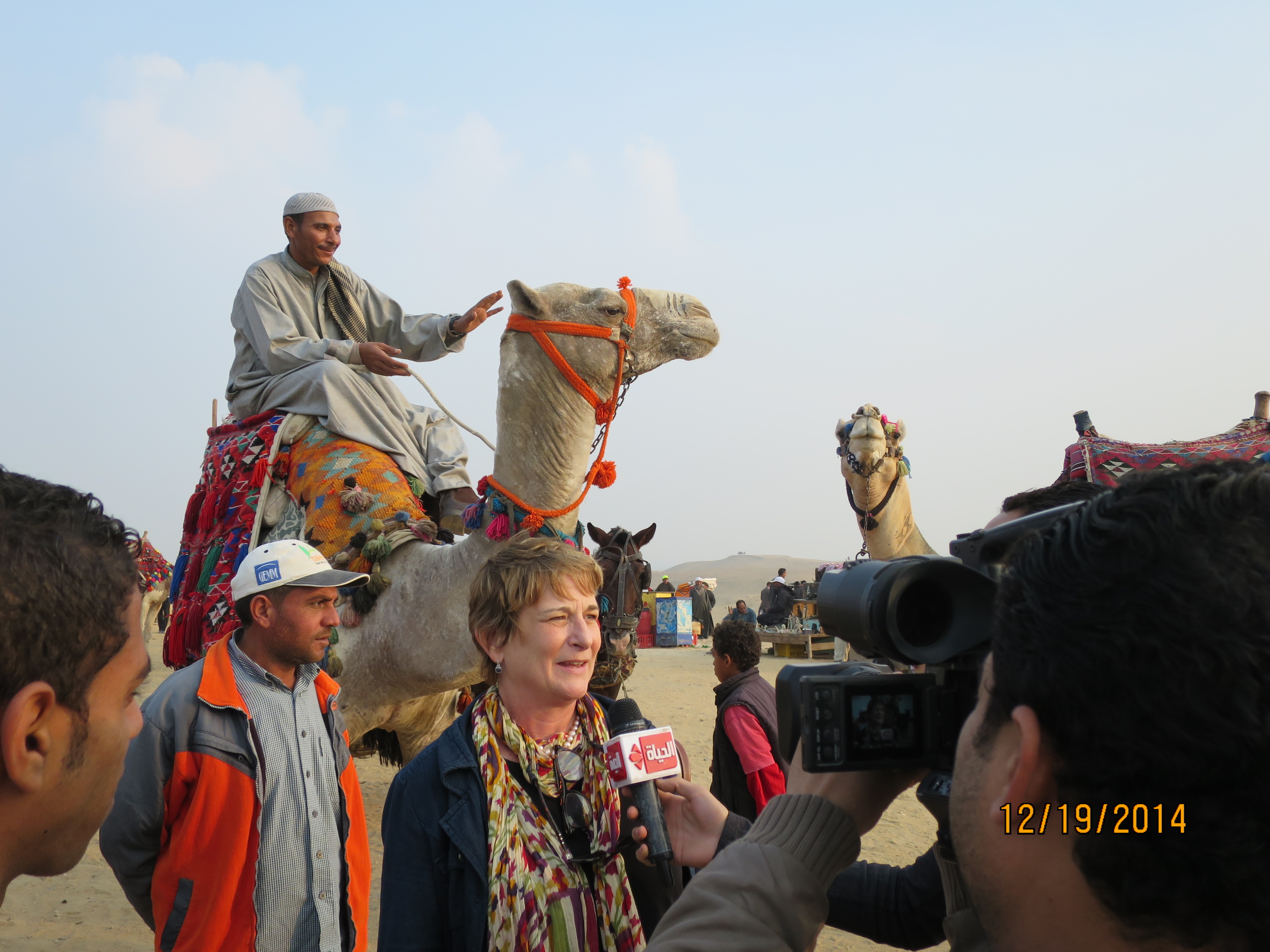
there were politicians on the observation hill promoting tourism, they asked ME for an interview for nation TV
The Pyramid of Djoser known as the step pyramid was built around 2650BC. It is a little older and was known as the proto-type to the Giza Pyramid.
The Dahshur Pyramids again a little older was also a learning experience for the early Egyptians. The Bent Pyramid changes its angle halfway up the sides. The steeper angle in the lower half produced to much downward pressure towards the center of the structure. The Red Pyramid was the first true smooth-sided pyramid. The Great Pyramid of Giza could not have been built without the knowledge of these two pyramids.

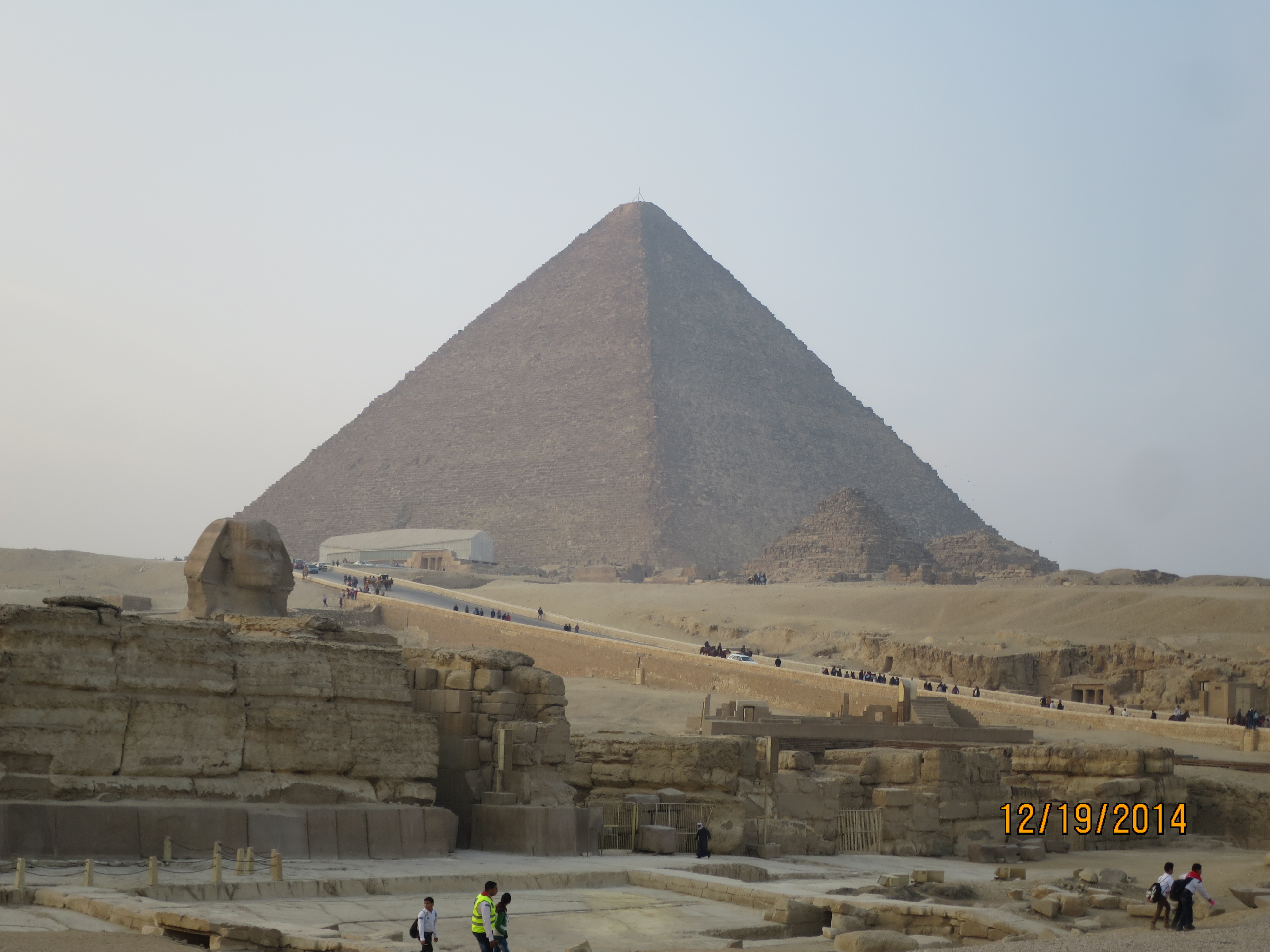
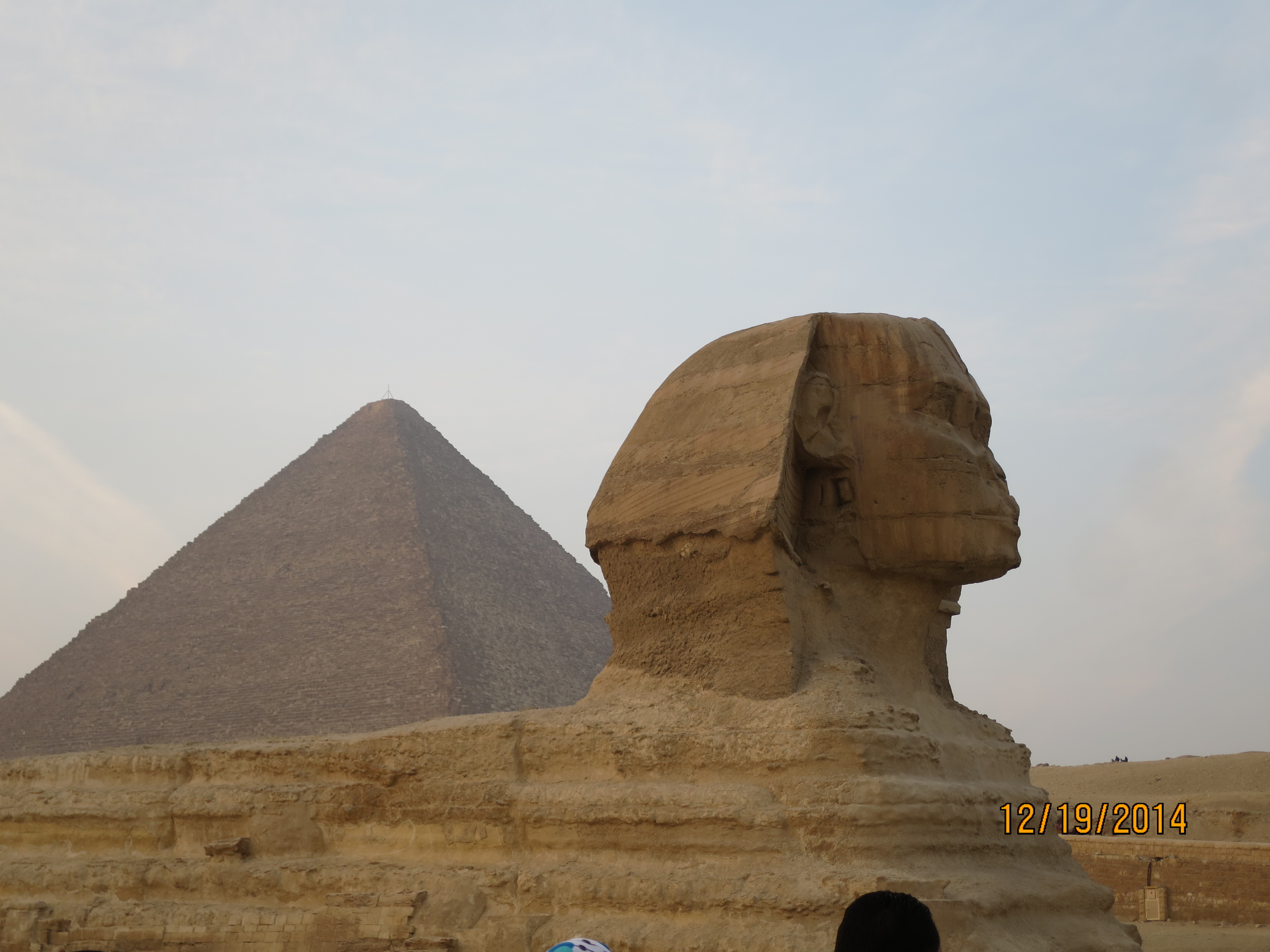
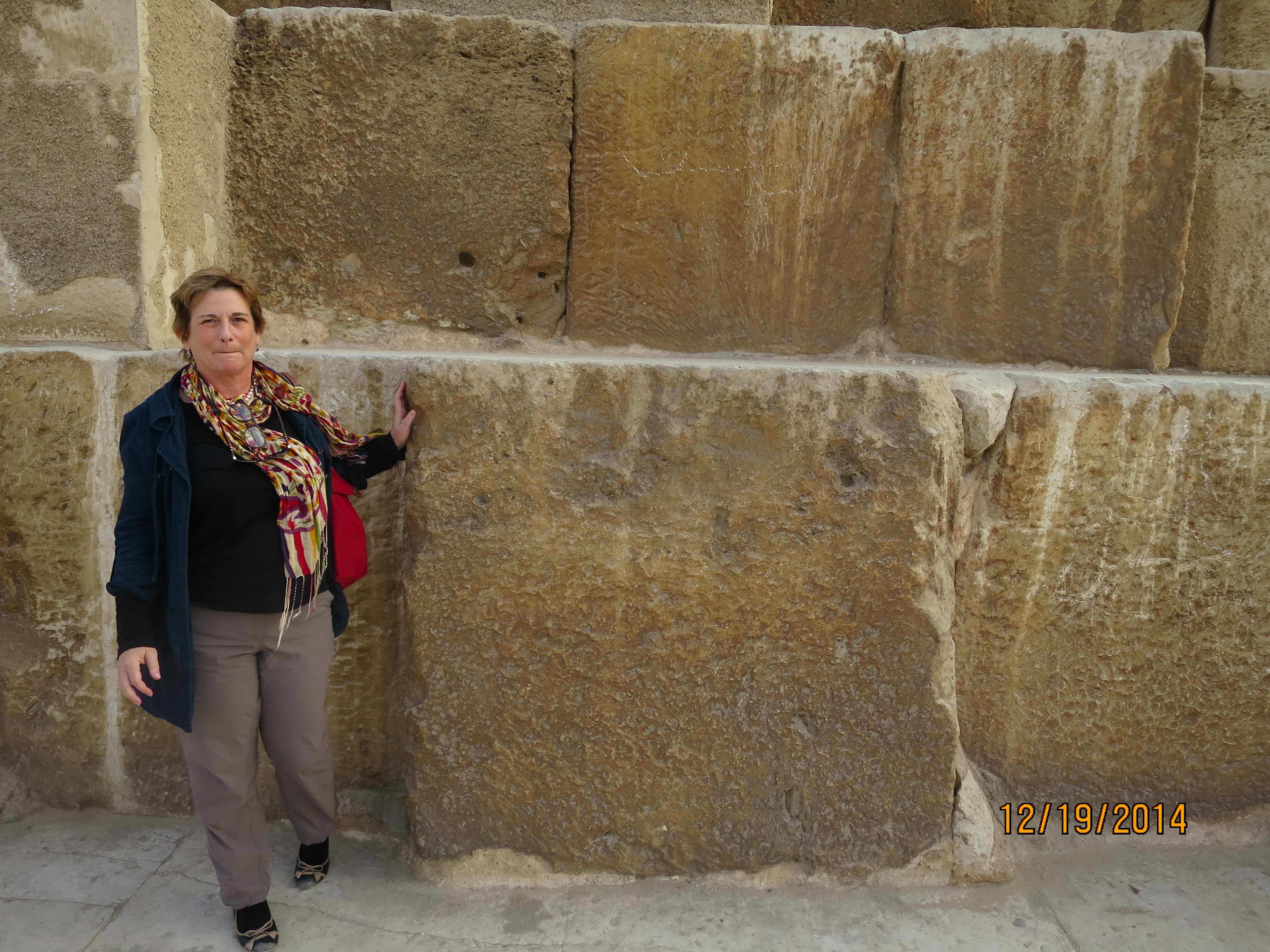
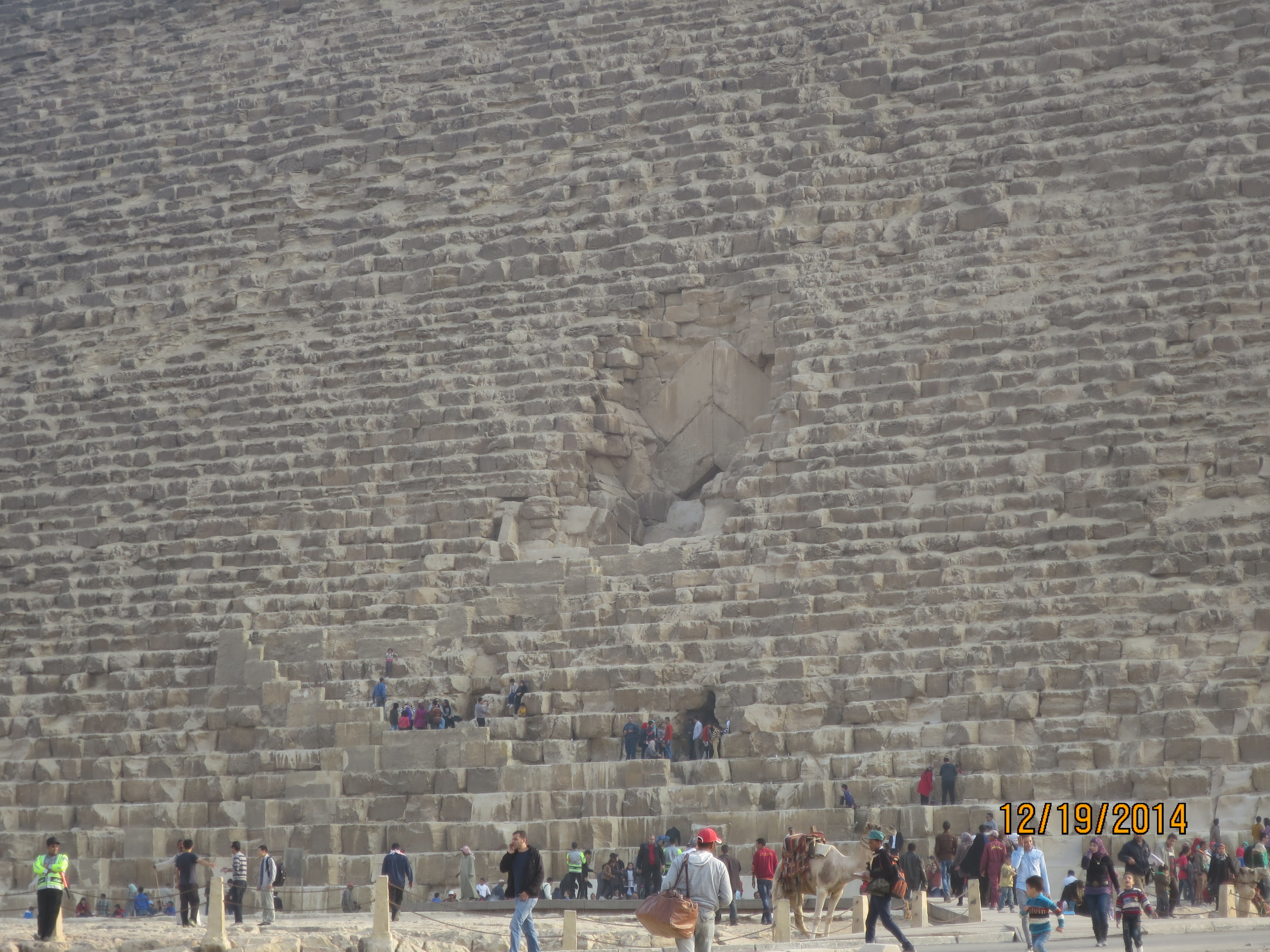
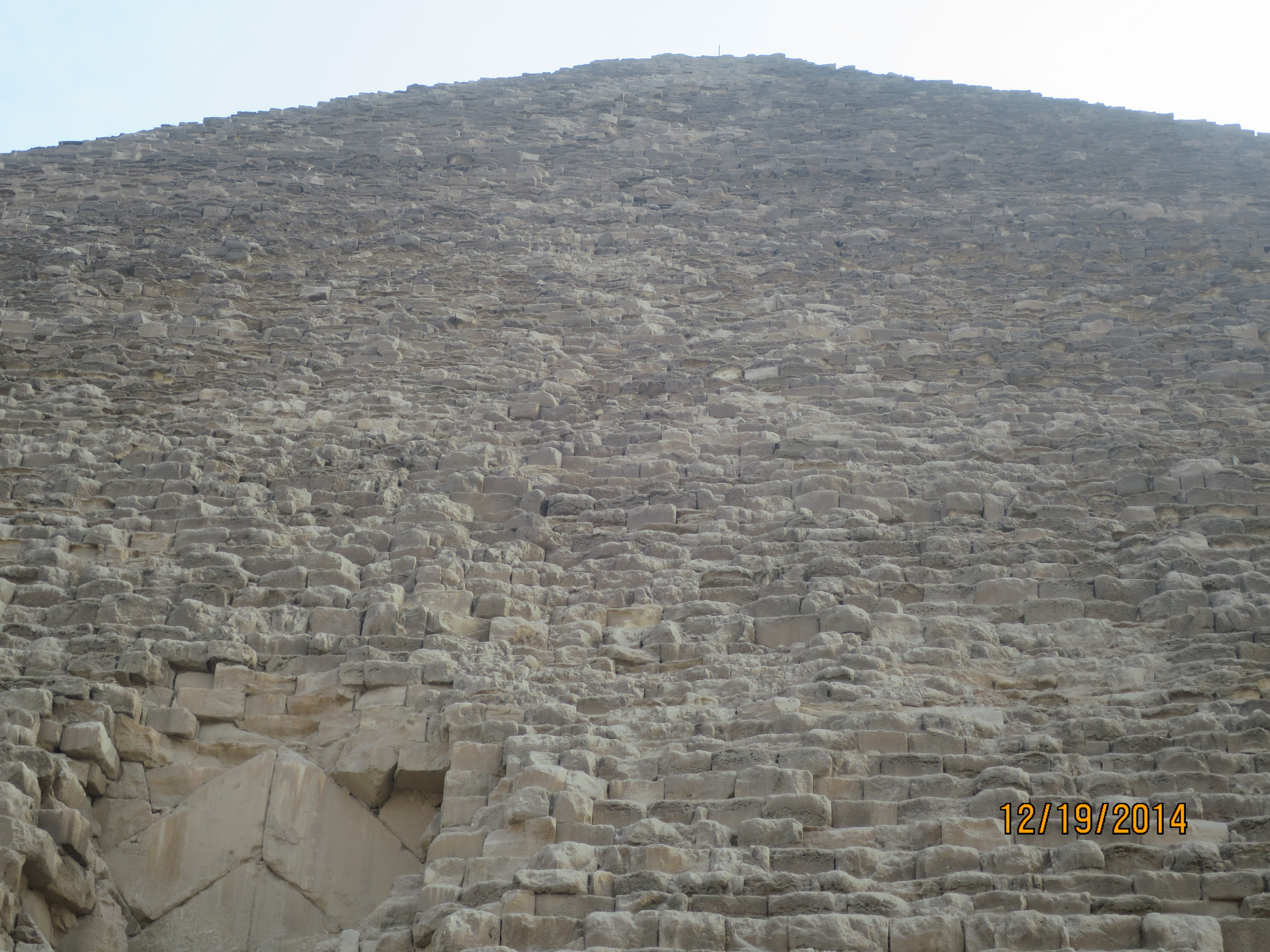



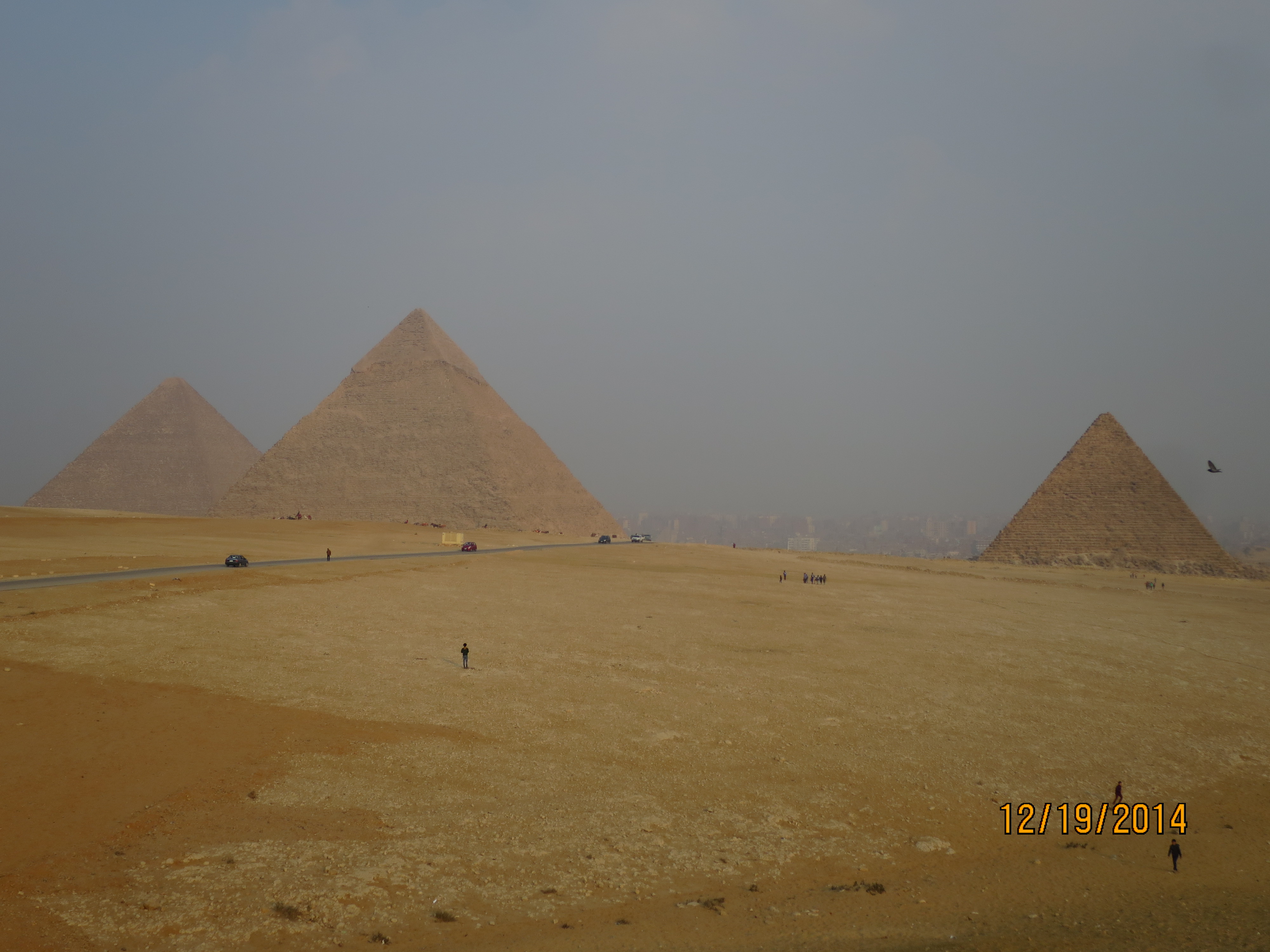
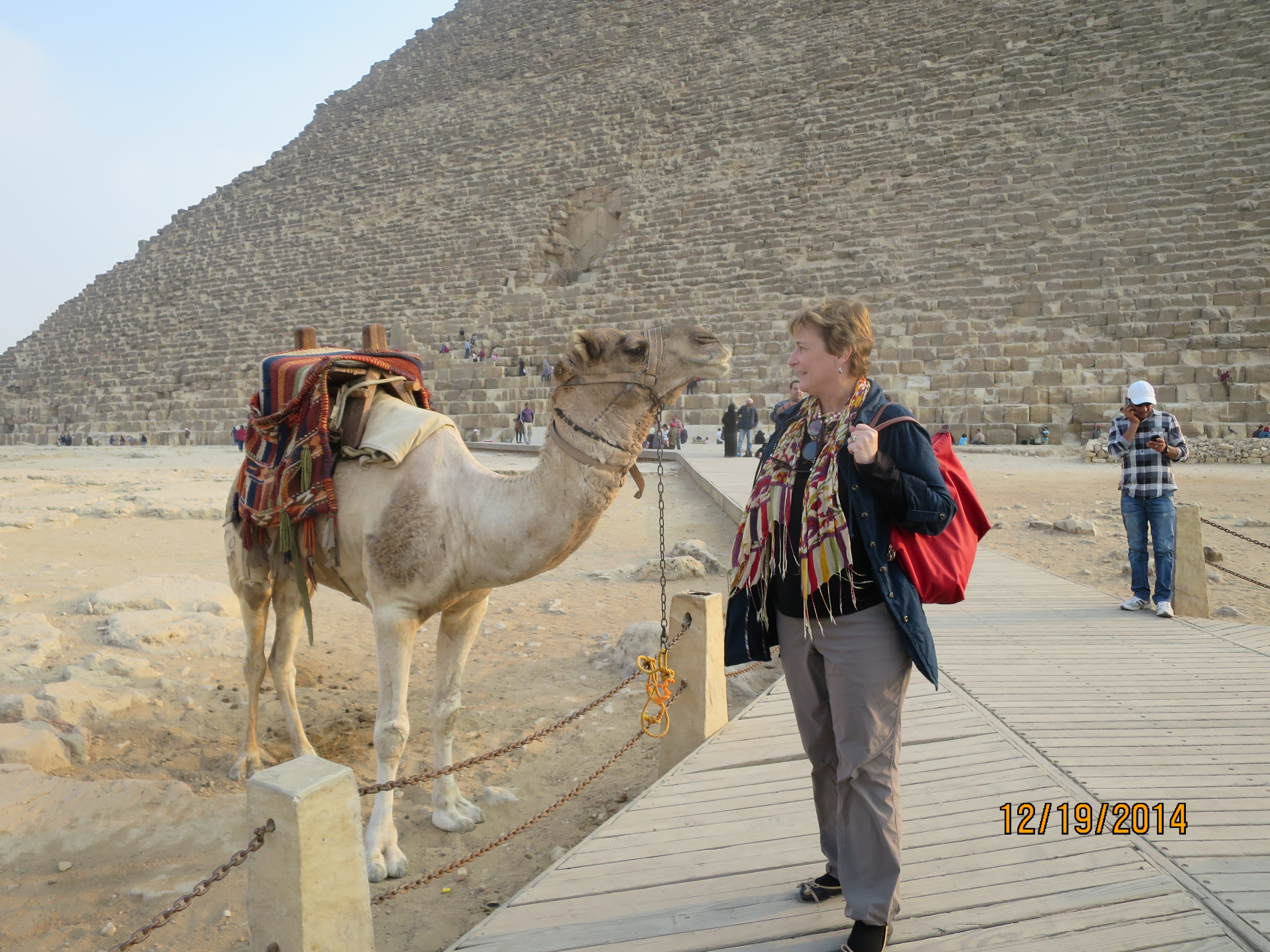
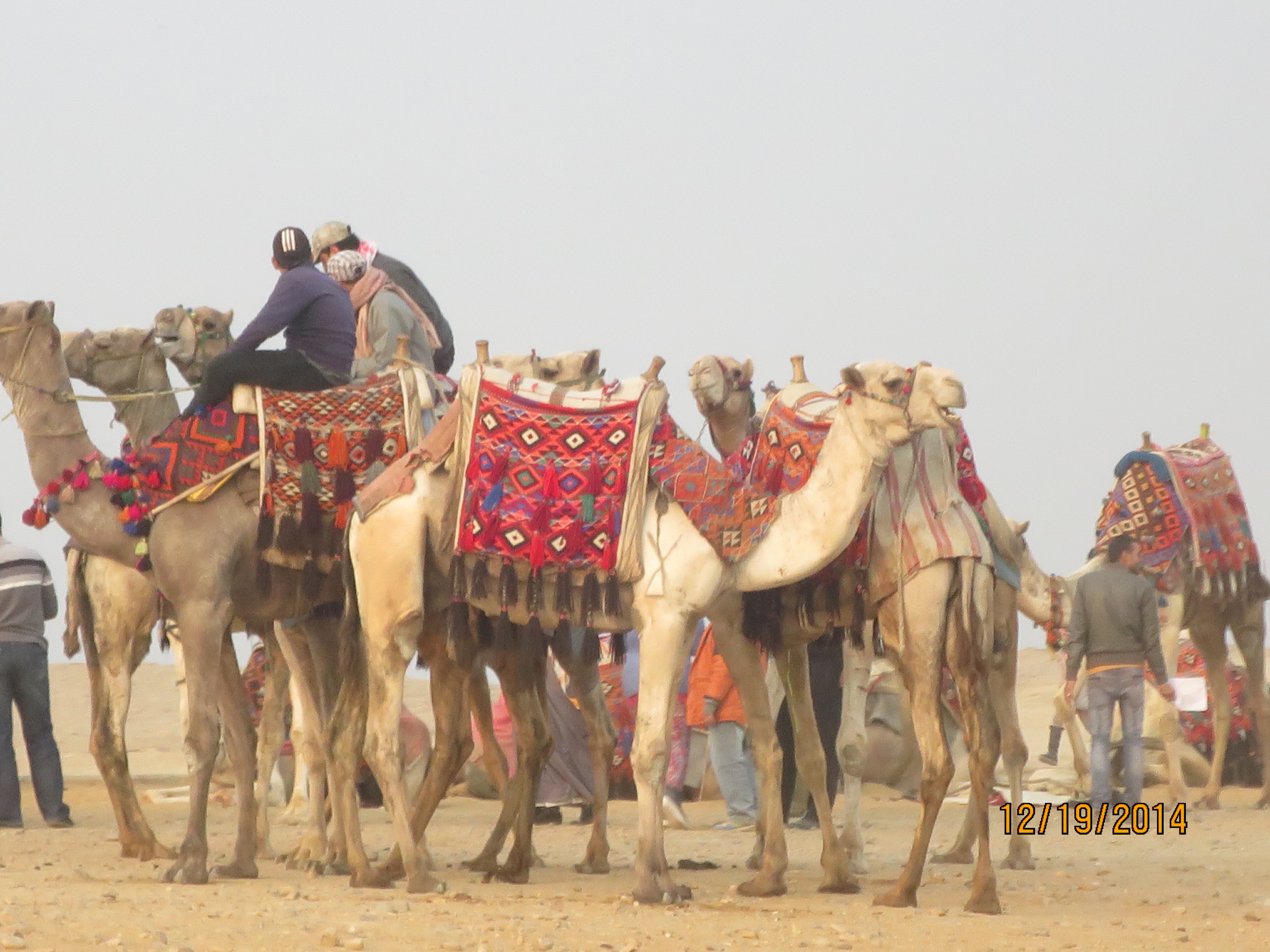
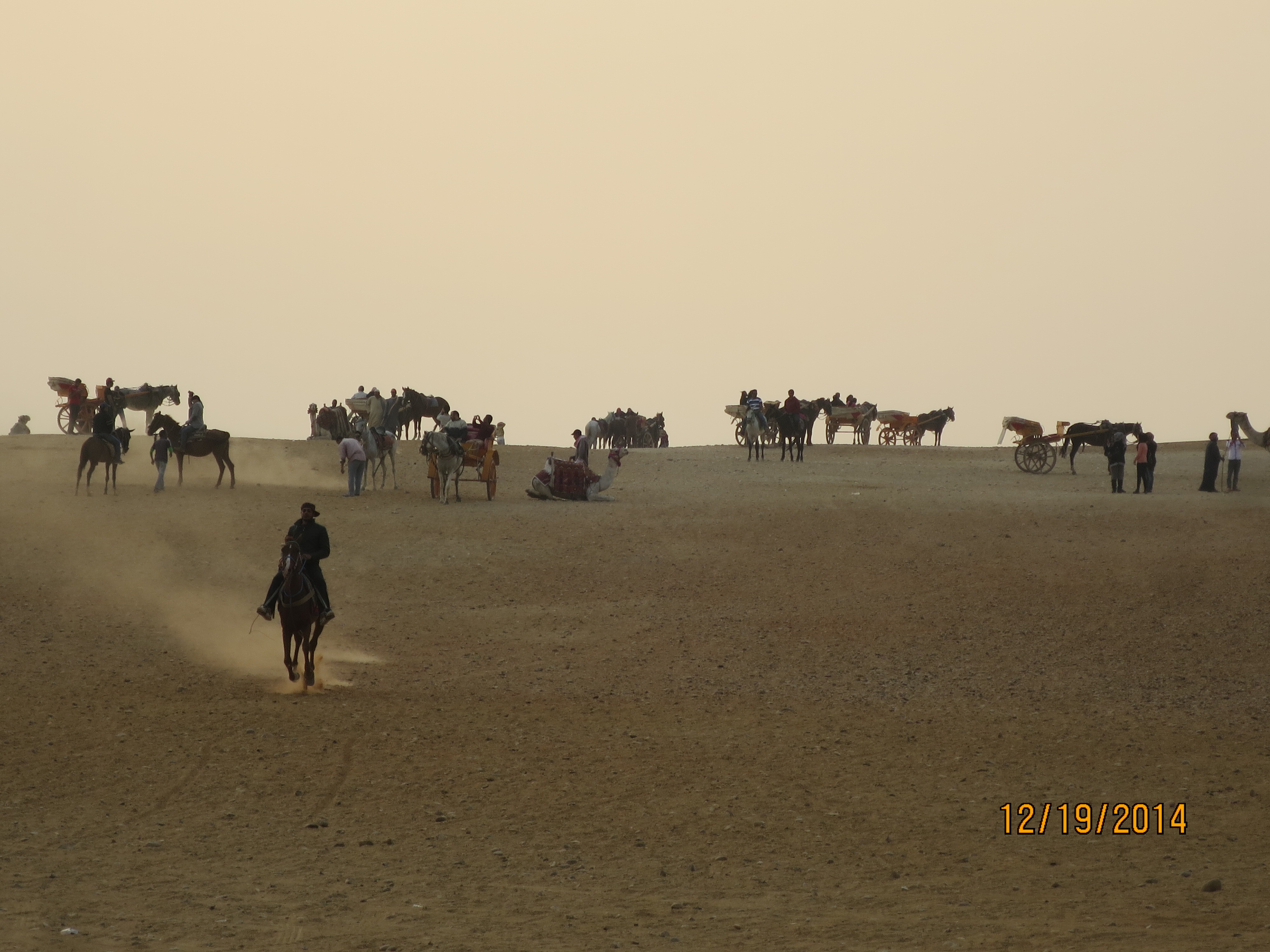
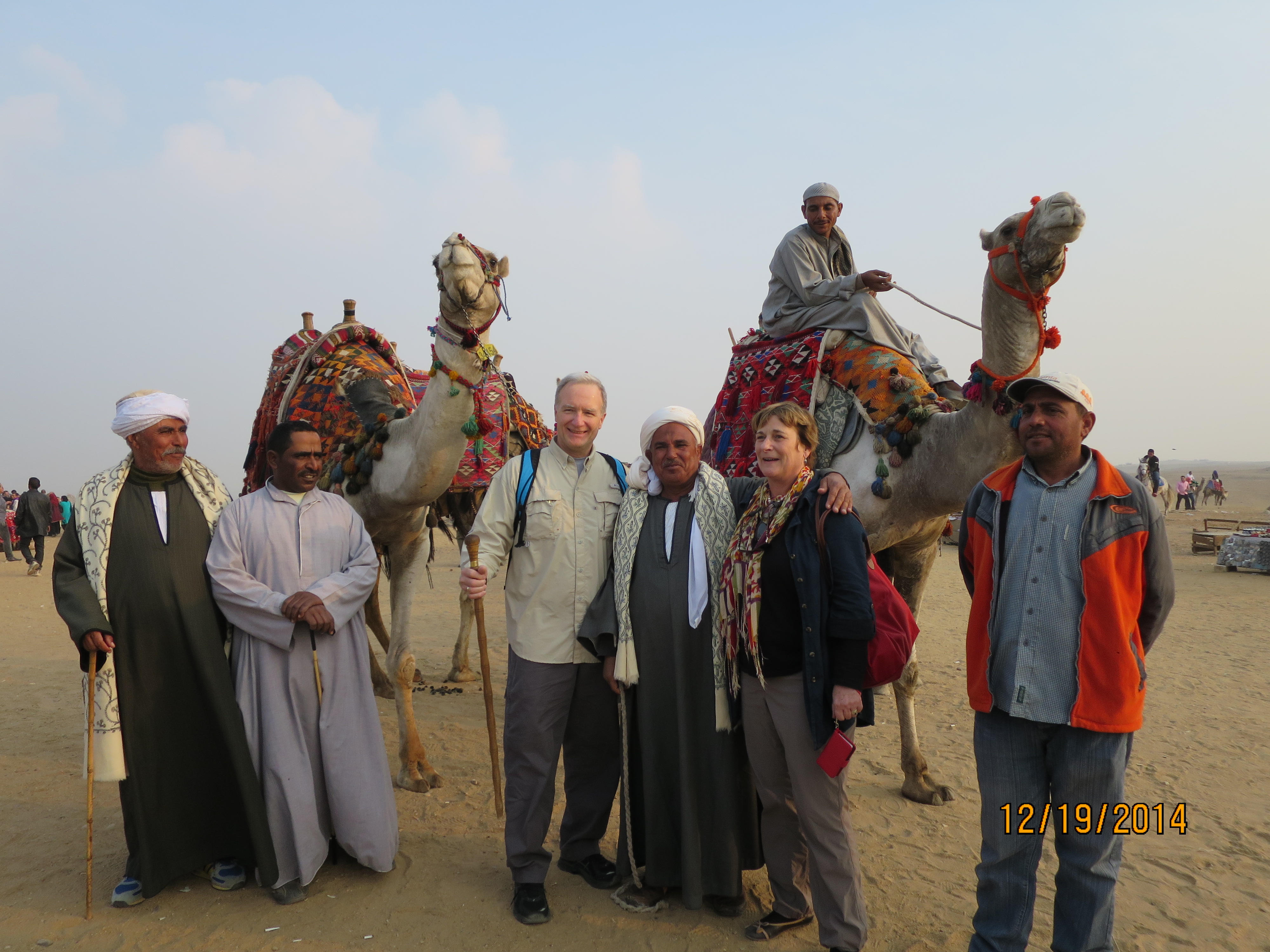
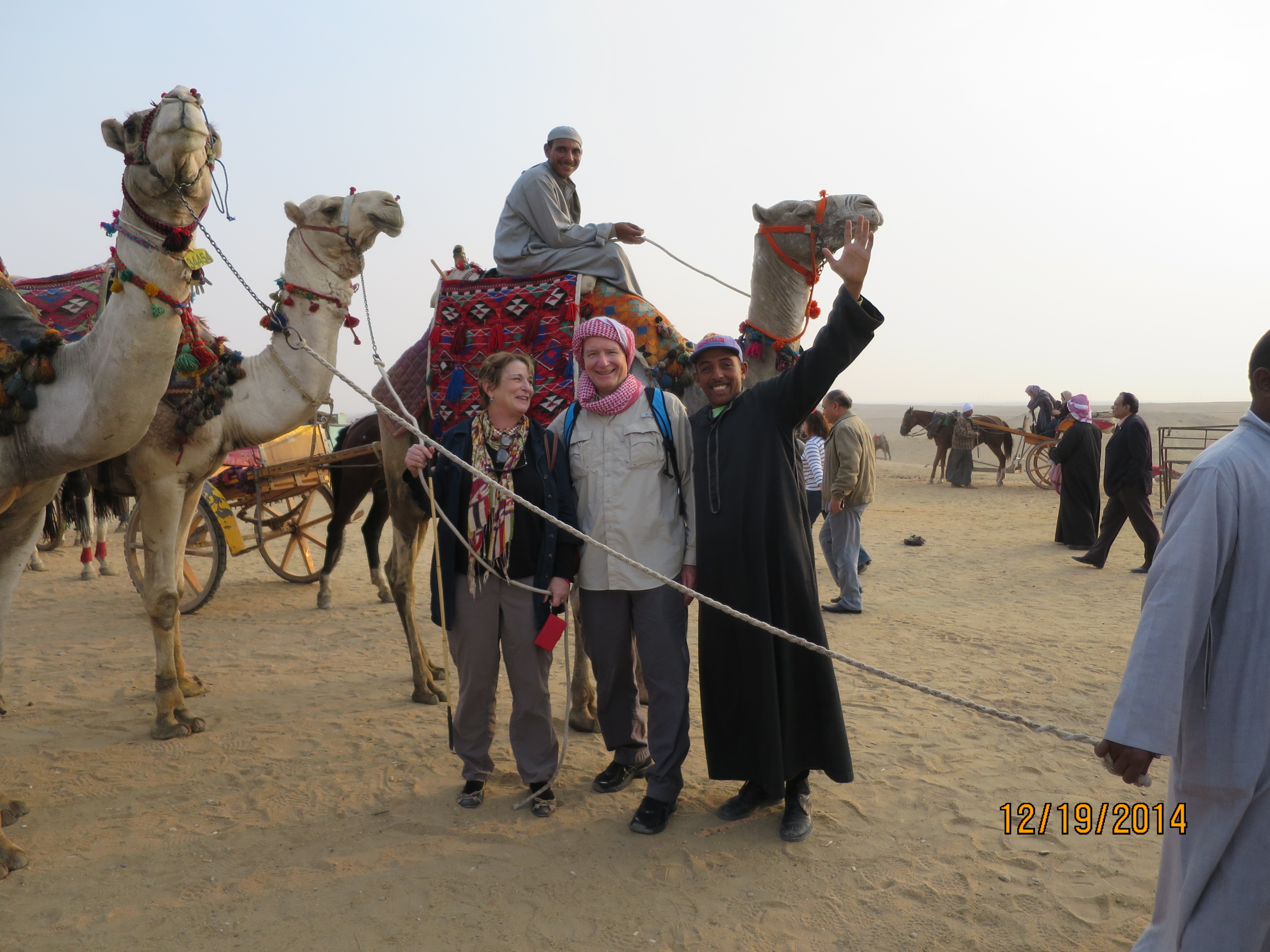
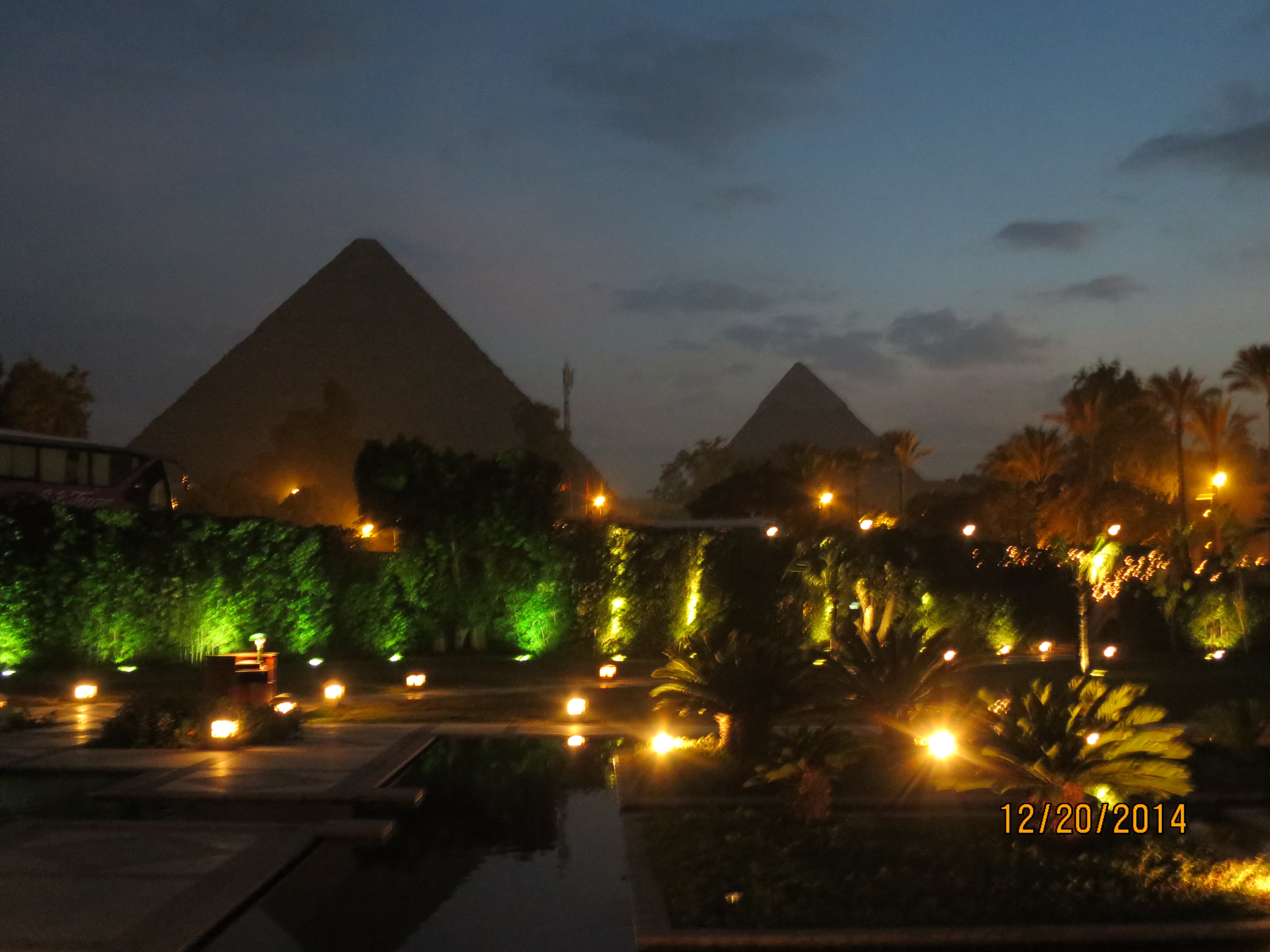
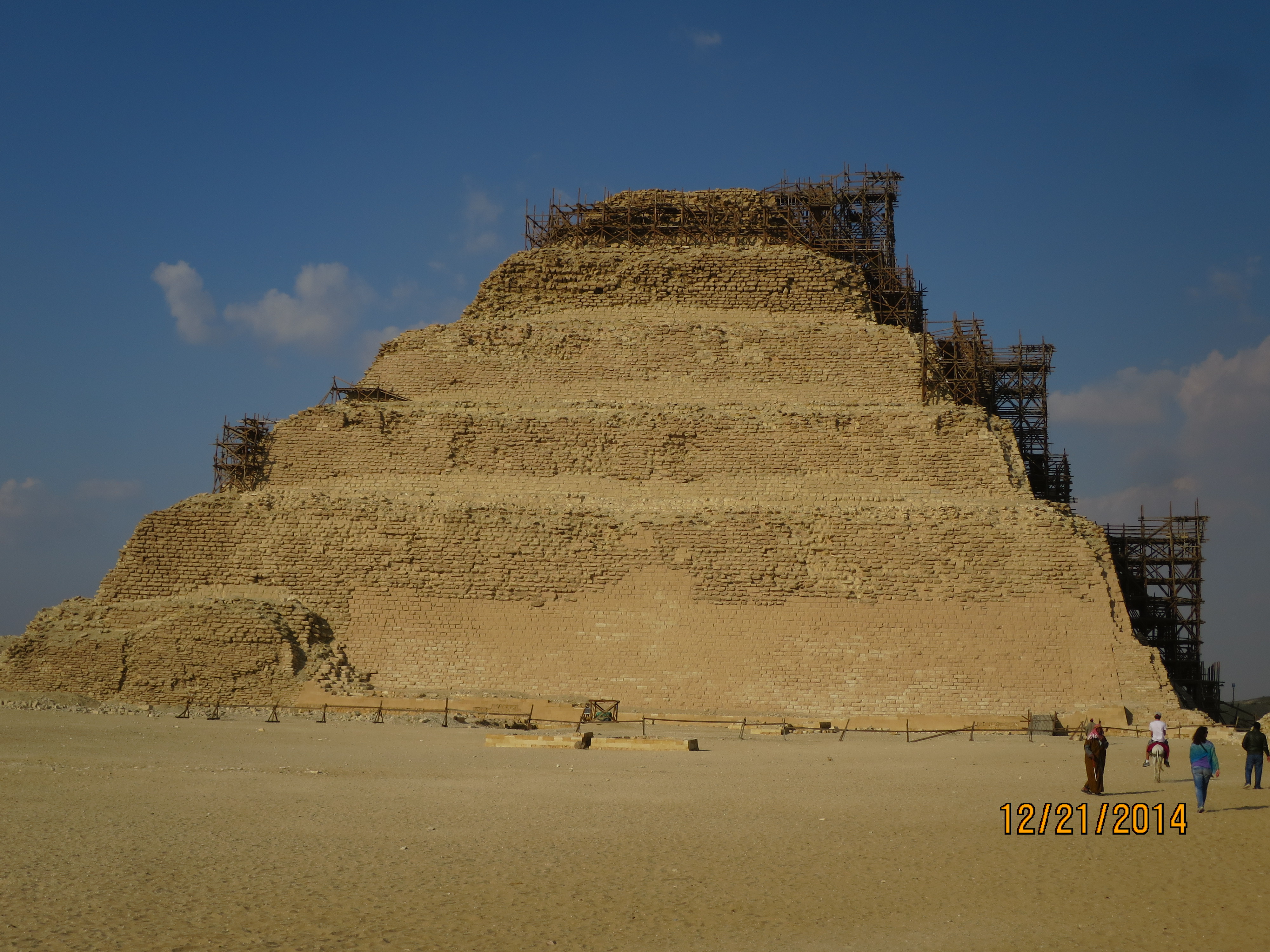
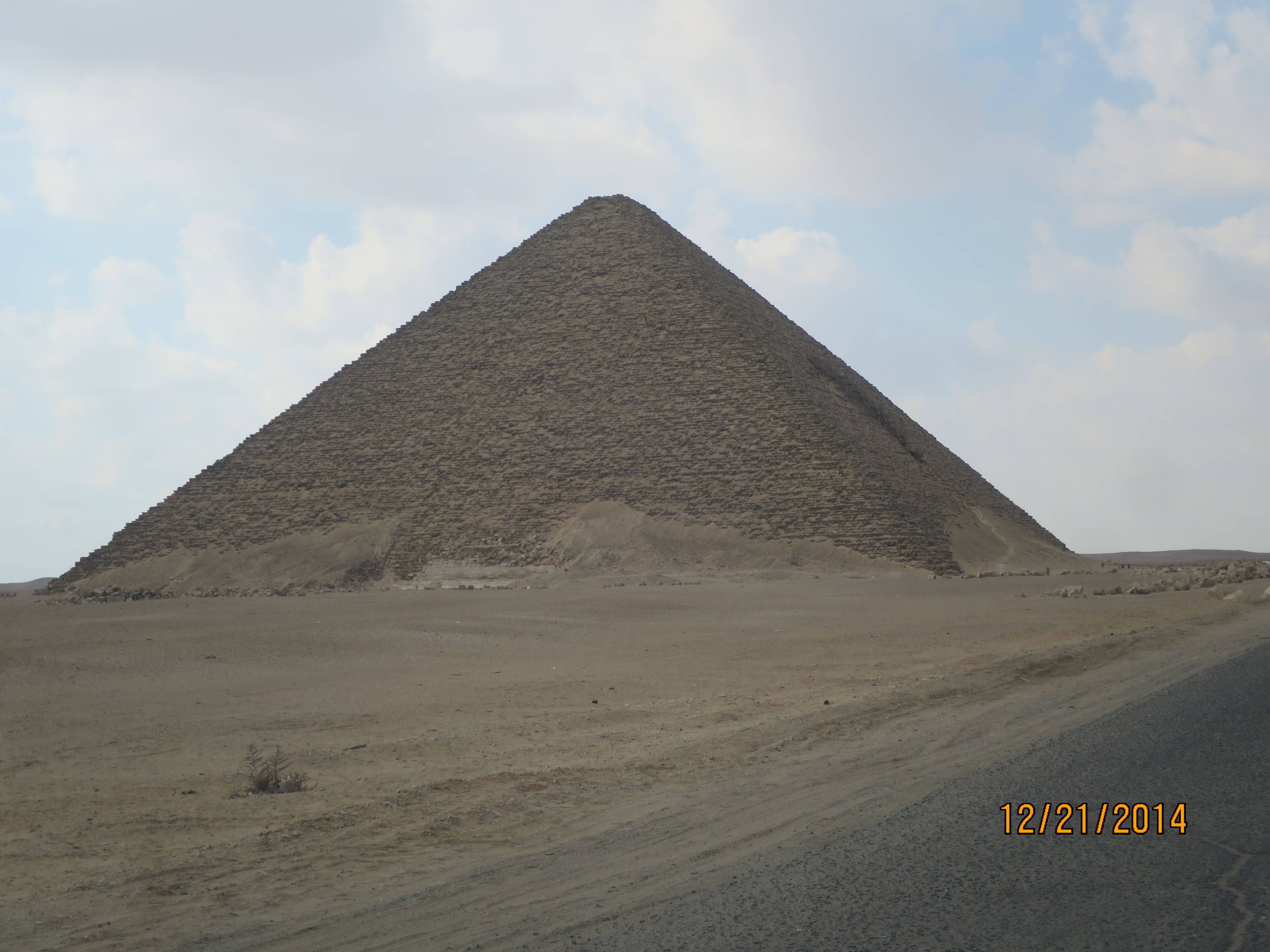
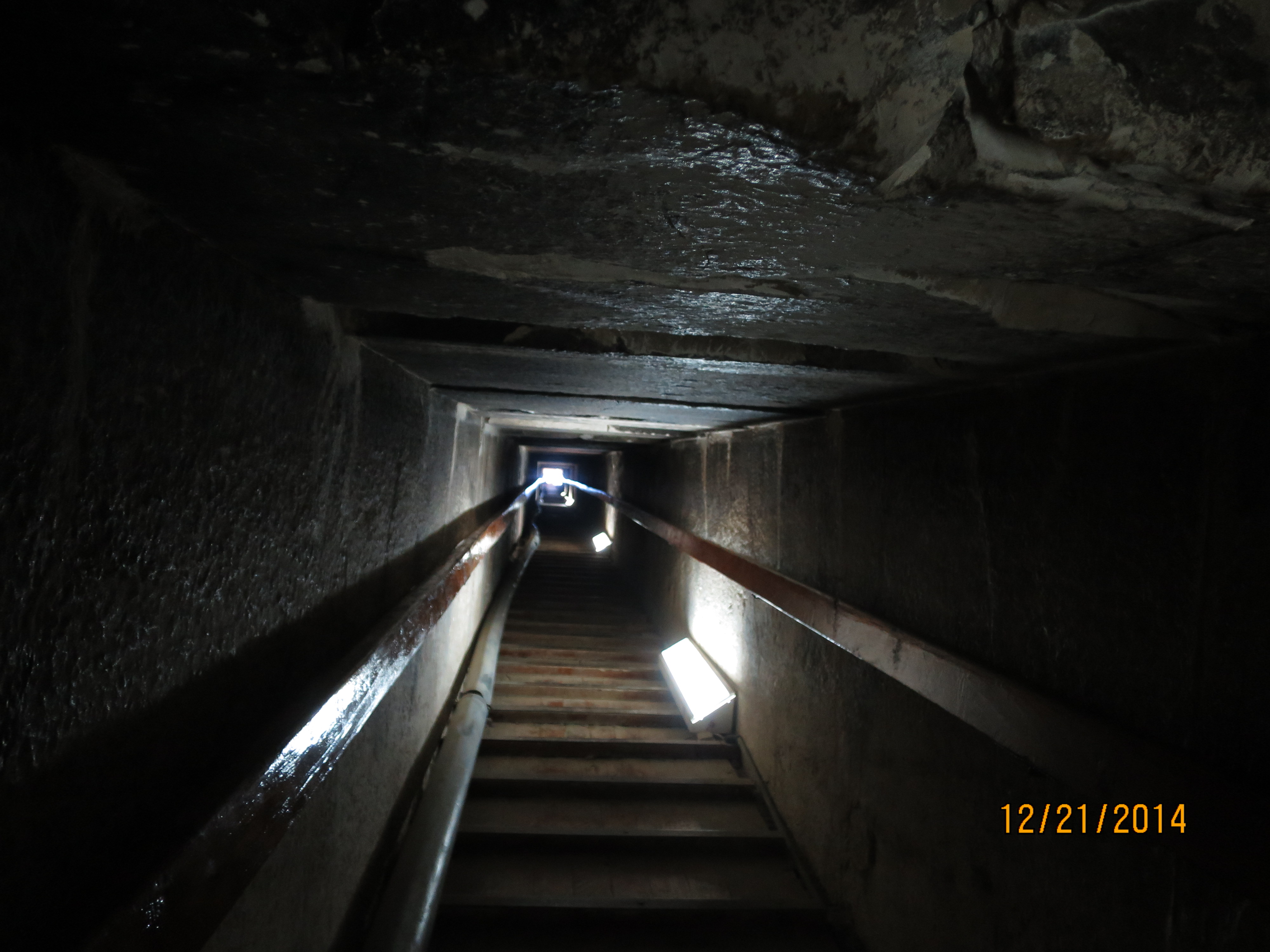
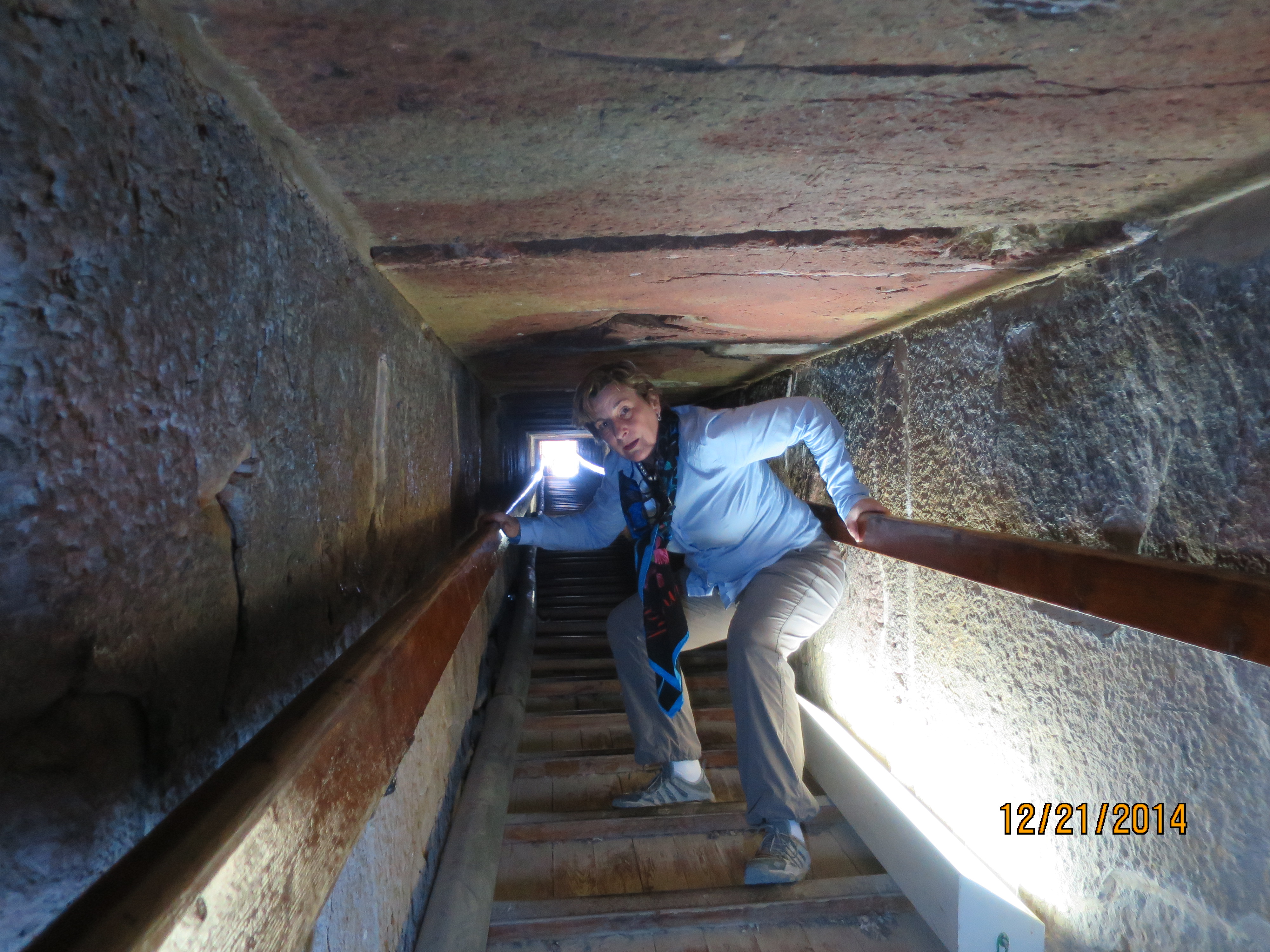
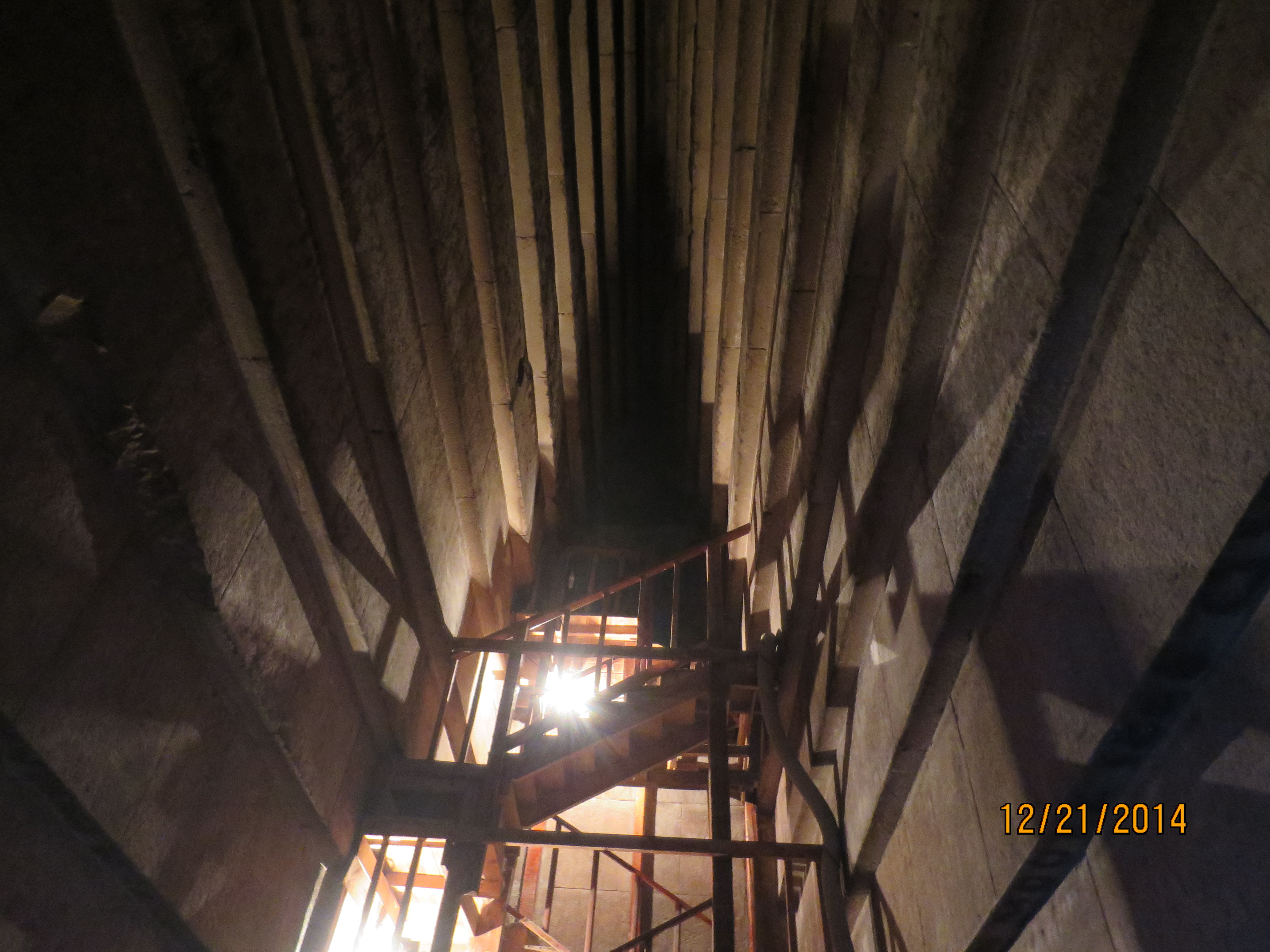
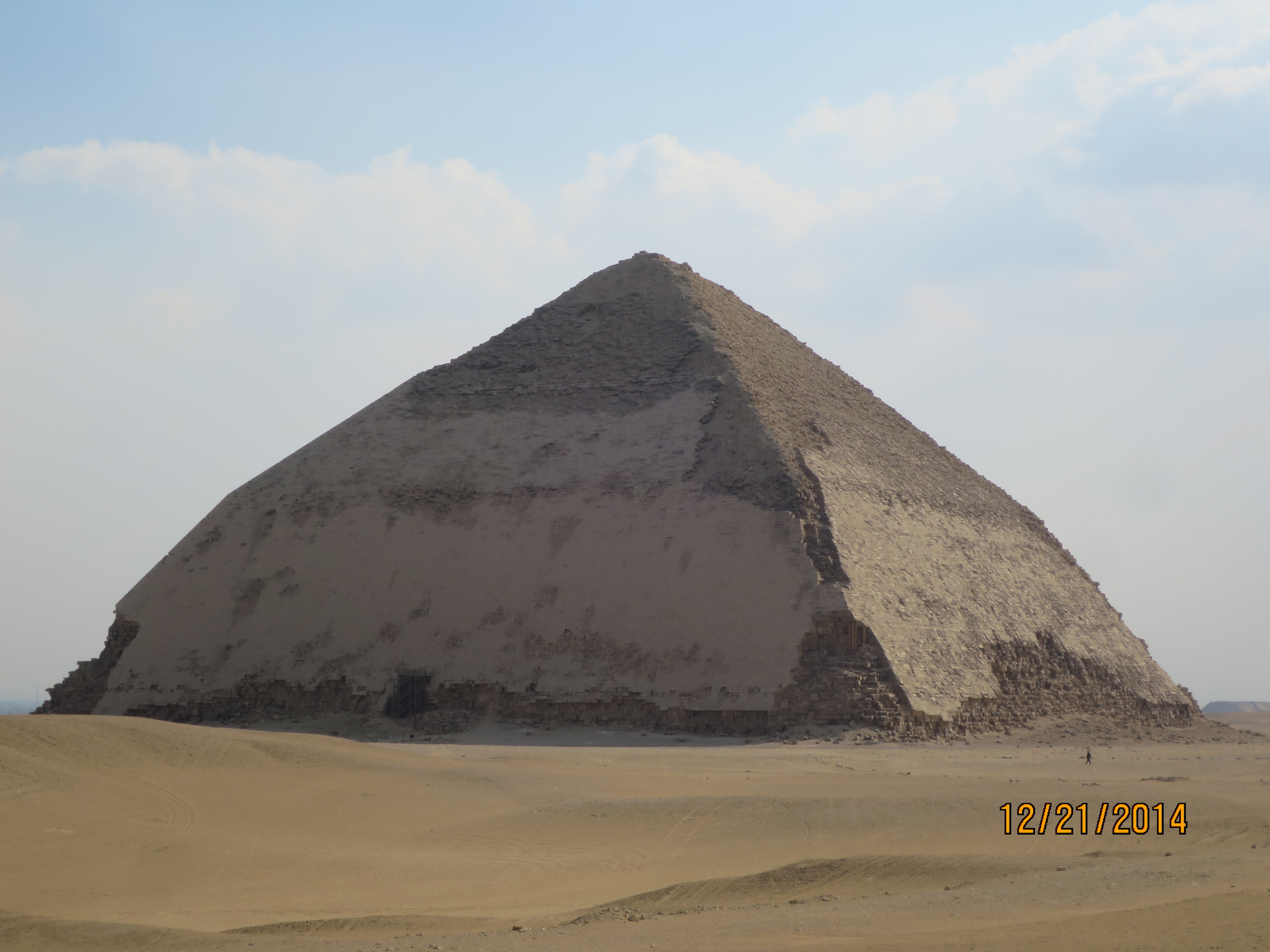
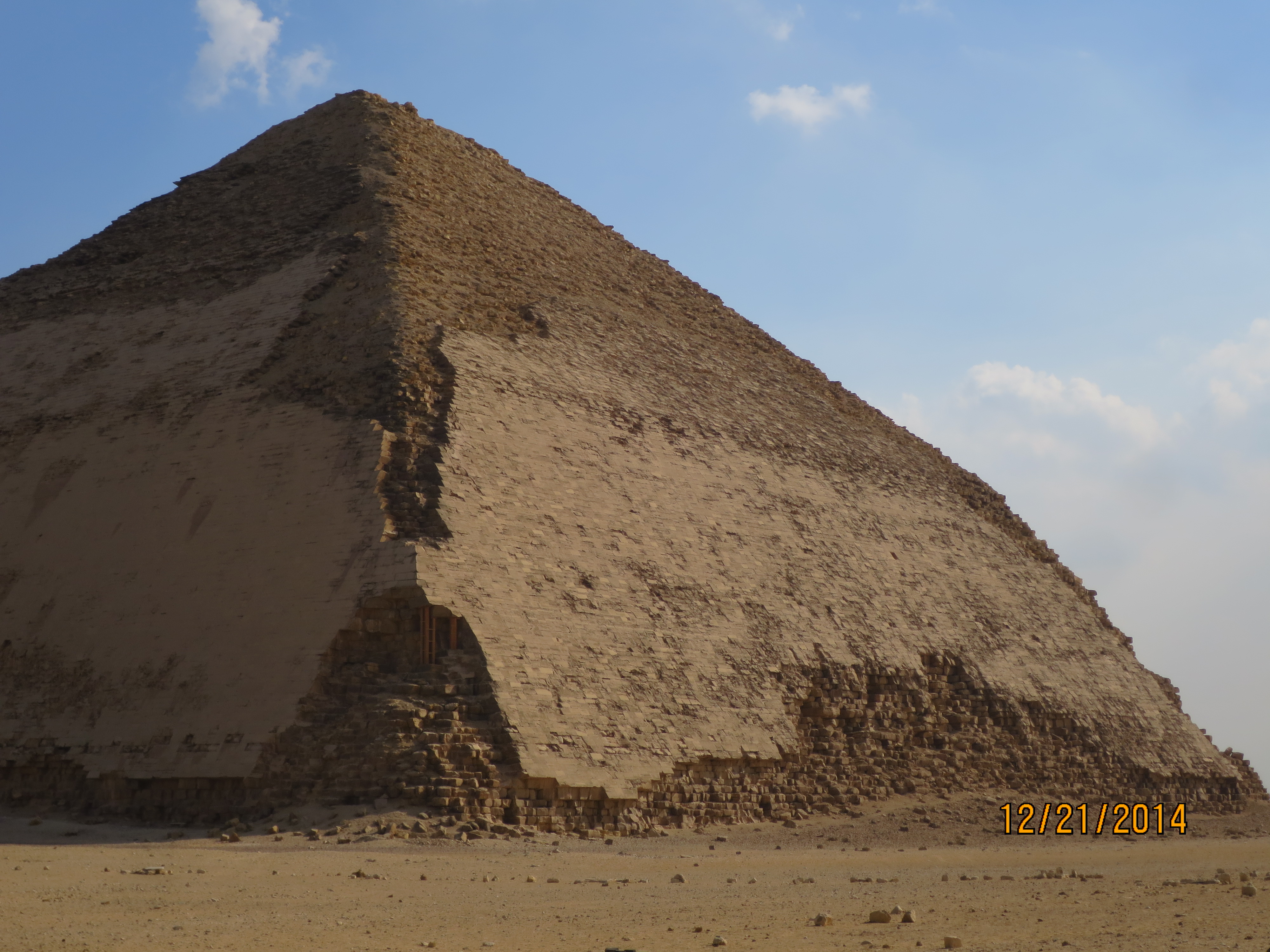
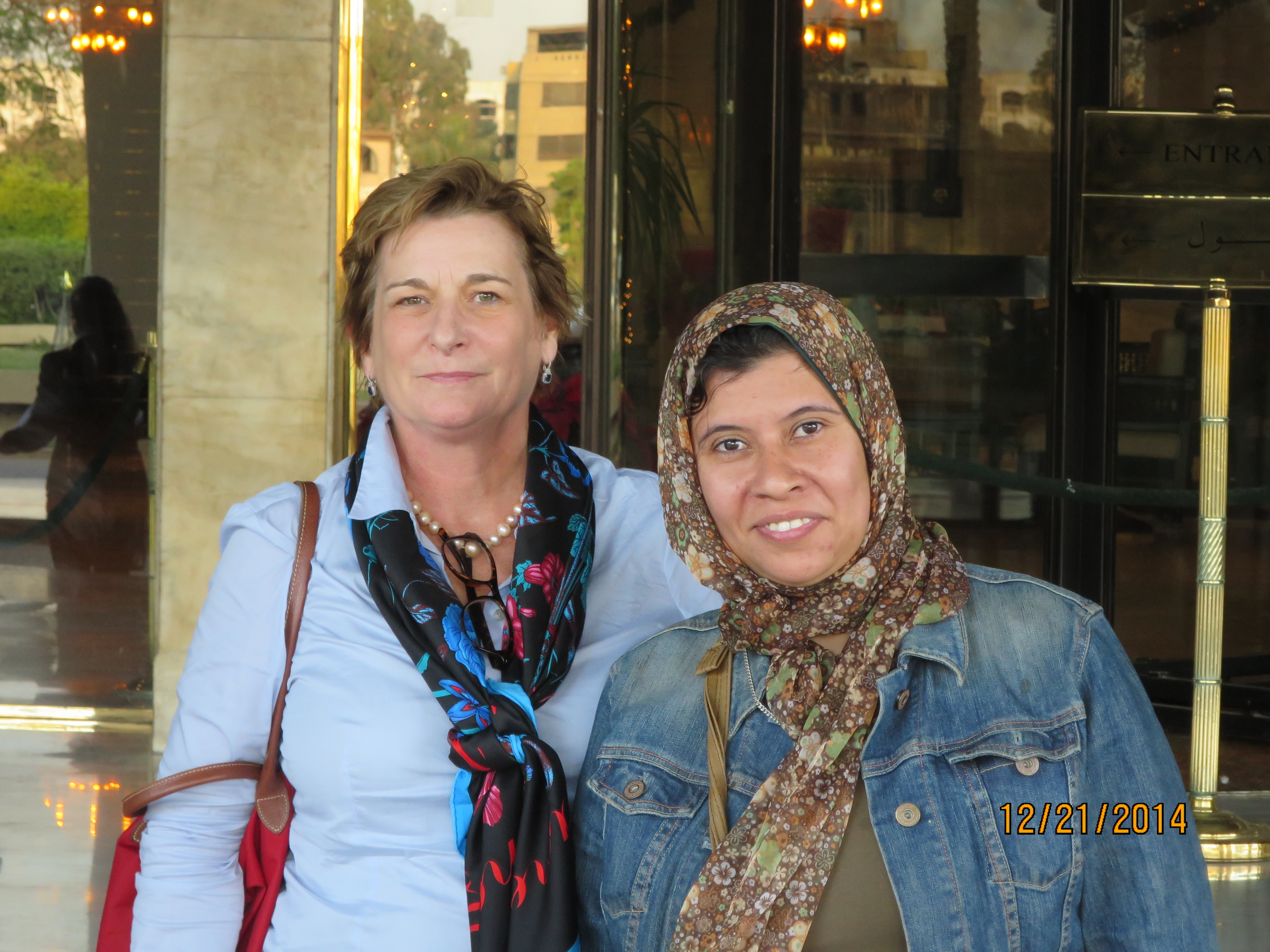
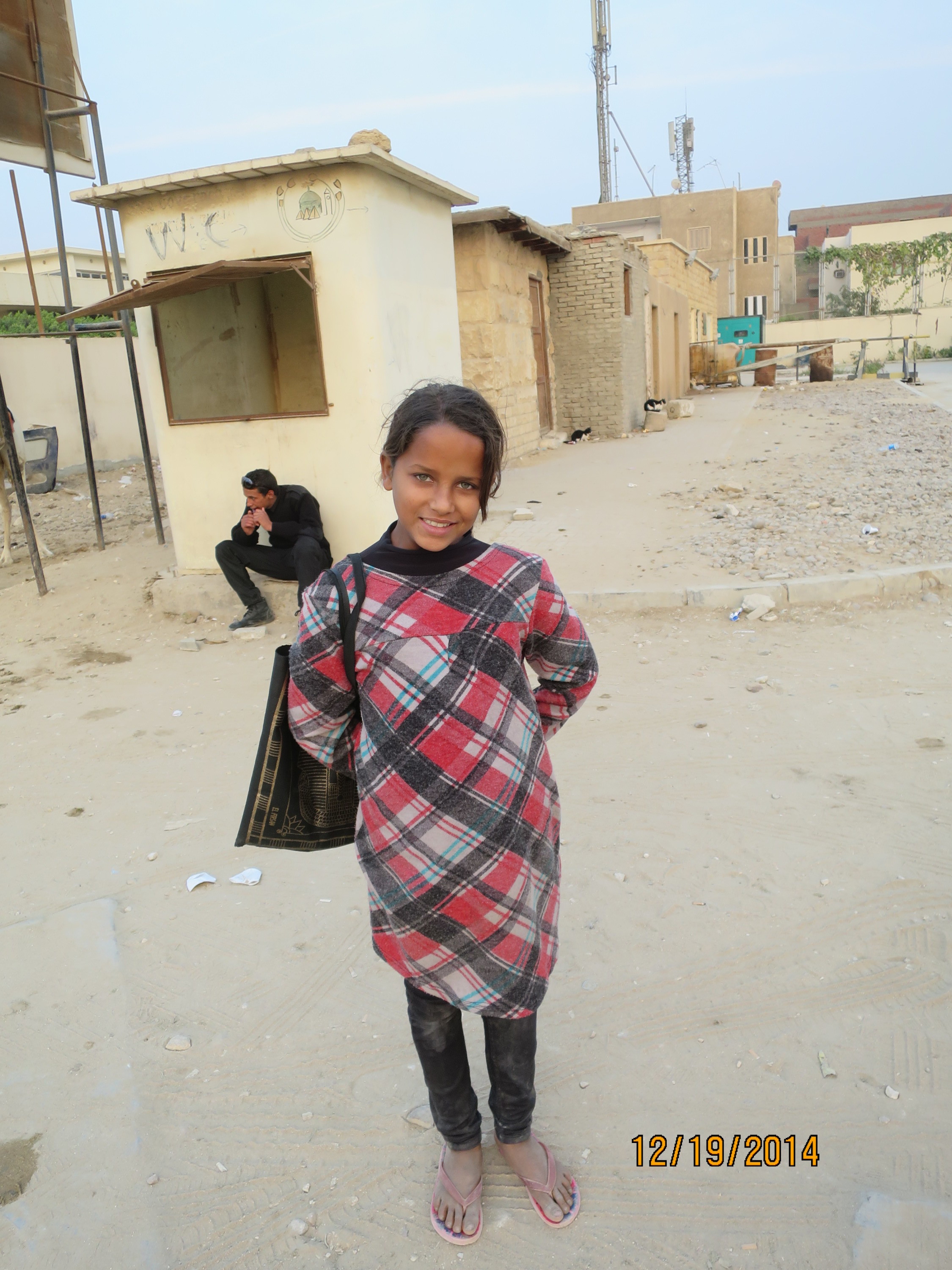
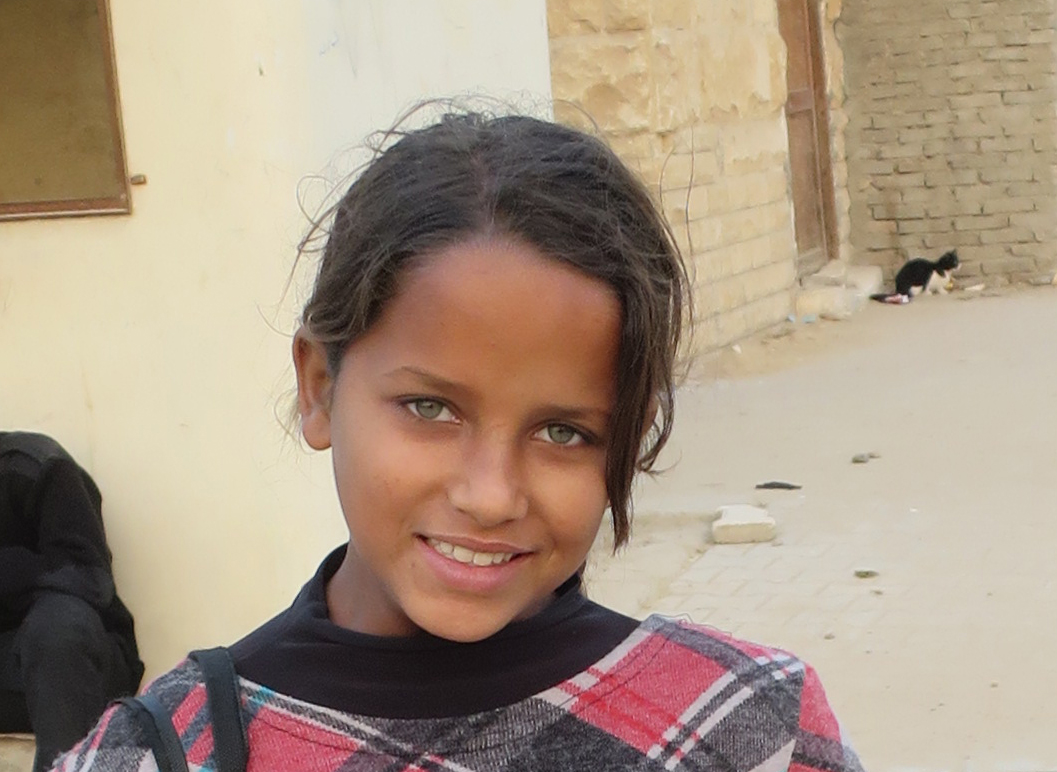
Great photos and nice tidbits of current and historical context! I’m sure Egypt’s tourist industry appreciates the press. Keep up the amazing work, Dad! xoxoxM
Keep up the amazing work, Dad! xoxoxM